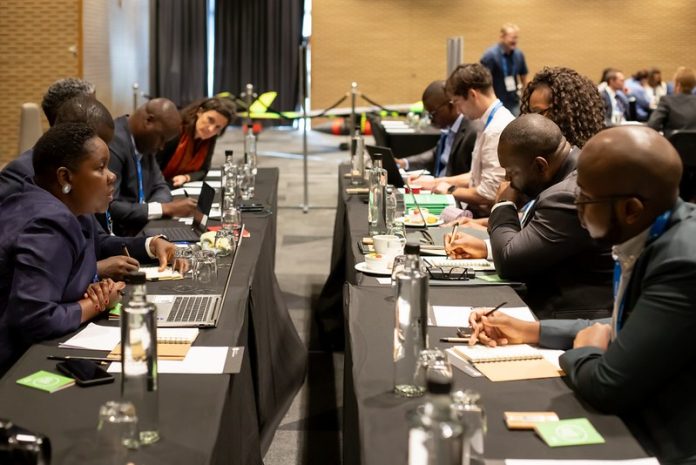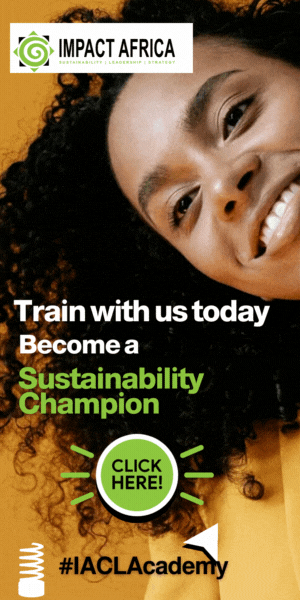Africa’s Green Economy Summit (AGES) has opened its programme for its 2026 edition with a clear target in view: a USD 5 billion pipeline of projects that developers hope will attract the continent’s most serious climate and infrastructure investors whe n the Summit convenes from 24–27 February 2026 at the Century City Conference Centre.
The announcement signals a renewed push to anchor Africa’s sustainability ambitions in real assets, real capital, and real jobs at a time when many countries are racing to strengthen their climate and development pathways.
The launch of the official programme brochure set the tone for what AGES intends to be this year; an event built around the work of financing energy grids, water systems, mobility transitions, agricultural resilience and the digital tools now required to monitor and authenticate climate outcomes.
The scale of participation expected; over 580 delegates, 150 investors and about 200 project developers, reflects a landscape in which African governments and private actors are increasingly expected to produce well-structured, investment-ready proposals instead of broad declarations of need. The USD 5 billion pipeline does not represent the full demand for climate finance on the continent, which exceeds USD 250 billion annually, but its composition shows the variety of sectors now advancing to bankability.
Read also: The wins and loses for Africa at COP30 from its conclusion
Organised by the VUKA Group and anchored by lead partner Sanlam Investments, AGES 2026 places emphasis on connecting commercially viable ideas with the institutions capable of financing them. That link remains one of the most persistent gaps in Africa’s climate economy. Many African markets have robust technical potential for renewable power, smart agriculture and nature-based systems, yet projects often stall for lack of early feasibility investment, creditworthy offtakers or risk guarantees.
In South Africa, developers face grid congestion and slow licensing timelines; in Nigeria, weak utility structures hinder bankable power agreements; in Kenya and Rwanda, growing clean-energy pipelines have advanced faster but still require private capital to scale. The mix of delegates expected in Cape Town suggests an improving ecosystem where these constraints are tackled more deliberately.
The agenda presented in the new brochure moves beyond climate rhetoric to technical issues that define today’s investment landscape. Sessions explore how Article 6 cooperation can unlock cross-border carbon markets; how digital MRV and AI-supported climate intelligence can give investors confidence in emissions and biodiversity data; and how African cities can re-engineer water, waste and mobility systems to support growing populations under increasingly unpredictable climate conditions.
These topics are not theoretical for African countries. Water scarcity already affects cities such as Windhoek, Maputo and Gqeberha, while extreme heat is reshaping agricultural calendars from the Sahel to central Tanzania. The way financial flows and technology respond to these pressures will determine whether countries build resilience or fall further behind.
The programme also reflects the depth of expertise shaping the Summit. Advisors from global climate-finance institutions, African development commissions, biodiversity research bodies and climate fund managers will contribute technical detail on financing structures, sovereign-risk profiles and the evolving regulatory standards investors now expect. Their presence illustrates the shift toward evidence-driven climate investment, where financial decisions are tied not only to emissions reductions but to long-term service delivery, ecosystem integrity and community resilience.
Central to the Summit is its Investment Pitch and Showcase Programme, a curated platform of 40 projects ranging from USD 1 million early-stage concepts to ventures exceeding USD 100 million. These projects include small-scale solar systems for rural mini-grids, battery storage designed to stabilize urban distribution networks, waste-to-value plants that convert organic waste into energy or soil enhancers, new circular-economy manufacturing lines, digital monitoring tools for smallholder farmers, and resilient water infrastructure for coastal and drought-prone cities.
Each project enters the room with its financial model, risk assessment and outcome metrics ready for scrutiny. Developers will face DFIs, venture capital networks, commercial banks and blended-finance vehicles seeking clarity on viability and long-term impact. It is the sort of disciplined evaluation that has often been missing in Africa’s climate-investment landscape.
Read also: CMAS 2025 publishes post-event report detailing Africa’s carbon market growth and COP30 roadmap
Technical site visits across Cape Town extend the Summit’s practicality. Delegates will observe renewable-energy systems integrated into industrial zones, large-scale water-reuse facilities, electric mobility pilots and resilience planning within municipal infrastructure. These visits offer insight into how climate financing translates into day-to-day operations, from job creation in local manufacturing hubs to cost savings for water-stressed cities. They also illustrate how other African regions could build similar pipelines if local regulatory conditions evolve accordingly.
The Summit’s strength lies in its partnerships. Sanlam Investments anchors the event alongside institutions such as the Global Green Growth Institute, Climate Policy Initiative, Convergence, Wesgro and the City of Cape Town. This cross-section of global and African actors underscores that climate finance is not confined to annual gatherings. It requires year-round coordination, from structuring blended-finance mechanisms to strengthening municipal planning systems and supporting reforms that allow private capital to flow at scale.
As competition for climate investment intensifies worldwide, AGES 2026 arrives at a moment when African countries can no longer rely on appeals to vulnerability alone. They must demonstrate readiness, strong institutions, well-prepared projects, transparent data and credible long-term strategies.
The programme unveiled this week shows a continent increasingly aware of that requirement. It also offers a glimpse into how Africa’s sustainability trajectory may shift if more of these projects secure financing and move from brochures to construction sites.
Find the programme, here.






